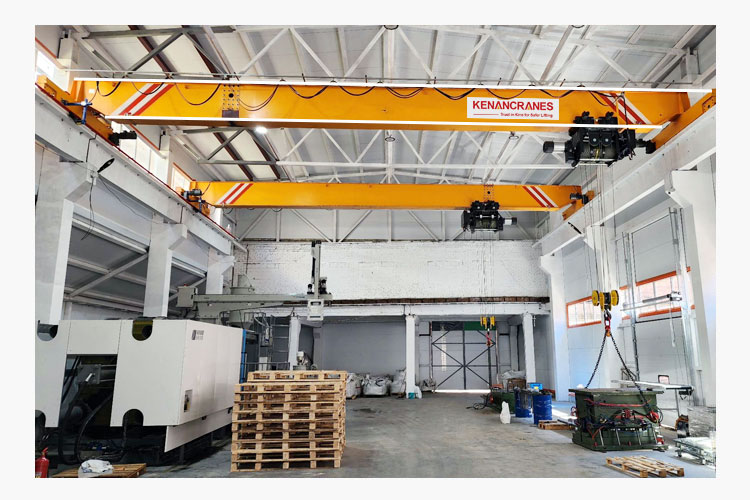In the realm of industrial manufacturing, the design and implementation of crane systems are pivotal for ensuring operational efficiency, safety, and scalability. A factory crane designer plays a crucial role in this process, blending mechanical engineering expertise with practical application to create lifting solutions tailored to specific industrial needs.
Understanding the Role of a Factory Crane Designer
A factory crane designer is a specialised mechanical engineer responsible for conceptualising, designing, and overseeing the installation of crane systems within industrial settings. These professionals work closely with manufacturers, structural engineers, and safety experts to develop lifting solutions that meet the unique demands of each facility.
Key Responsibilities
- Design and Engineering: Utilising computer-aided design (CAD) software, factory crane designers create detailed blueprints for crane systems, including overhead cranes, gantry cranes, and jib cranes. They ensure that these designs comply with industry standards and safety regulations.
- Structural Analysis: Conducting finite element analysis (FEA) to assess the structural integrity of crane components under various load conditions. This analysis helps in optimising designs for strength and durability.
- Customisation: Tailoring crane designs to fit the specific requirements of a factory, such as lifting capacities, span lengths, and operational speeds. This customisation ensures that the crane system integrates seamlessly into the existing infrastructure.
- Collaboration: Working with other engineering disciplines, including electrical and civil engineers, to ensure the crane system is compatible with other machinery and the overall factory layout.
- Compliance and Safety: Ensuring that all designs adhere to local and international safety standards, such as ISO 9001 and OSHA regulations, to mitigate risks associated with crane operations.
Essential Skills and Qualifications
To excel as a factory crane designer, individuals must possess a combination of technical skills and practical experience:
- Educational Background: A bachelor’s degree in mechanical engineering, industrial engineering, or a related field is typically required.
- Technical Proficiency: Proficiency in CAD software (e.g., AutoCAD, SolidWorks) and FEA tools is essential for creating and analysing crane designs.
- Understanding of Crane Mechanisms: In-depth knowledge of crane components, including hoists, trolleys, and bridge structures, is crucial for effective design.
- Problem-Solving Abilities: The ability to address complex design challenges and find innovative solutions is vital in this role.
- Communication Skills: Effective communication is necessary for collaborating with multidisciplinary teams and presenting design concepts to stakeholders.
- Experience: Hands-on experience in crane design or a related field enhances practical understanding and application of design principles.
The Importance of Factory Crane Designers in Industrial Operations
Factory crane designers are integral to the success of industrial operations. Their contributions extend beyond mere equipment design to encompass several critical areas:
1. Enhancing Operational Efficiency
By designing crane systems that are tailored to the specific needs of a factory, designers enable smoother workflows and reduced downtime. Efficient lifting solutions streamline material handling processes, leading to increased productivity.
2. Ensuring Safety
Safety is paramount in industrial settings. Factory crane designers incorporate safety features into their designs, such as overload protection and emergency stop mechanisms, to prevent accidents and protect workers.
3. Optimising Space Utilisation
Custom-designed cranes can maximise the use of available space within a factory. By considering factors like building height and layout, designers can create systems that utilise vertical space effectively, freeing up floor area for other operations.
4. Facilitating Maintenance and Upgrades
Well-designed crane systems are easier to maintain and upgrade. Factory crane designers plan for future scalability and ease of access to components, ensuring that maintenance activities can be performed efficiently without disrupting operations.
Career Path and Opportunities
The career path for a factory crane designer typically begins with a degree in mechanical or industrial engineering. Entry level positions may involve assisting in design tasks and gaining experience with CAD software. With experience, professionals can take on more complex projects, lead design teams, and move into managerial roles overseeing crane system installations.
Opportunities for factory crane designers exist in various sectors, including manufacturing, construction, logistics, and port operations. Companies can offer positions for mechanical design engineers, where professionals can engage in the design and installation of rail-mounted and rubber-tyre gantry cranes.
Conclusion
Factory crane designers are pivotal in shaping the backbone of industrial operations. Their expertise ensures that crane systems are not only functional and efficient but also safe and adaptable to the evolving needs of manufacturing environments. By combining engineering knowledge with practical application, they contribute significantly to the advancement of industrial capabilities.
